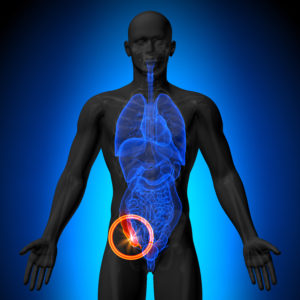
What is it?
An appendectomy is a surgical procedure to remove the appendix, typically due to appendicitis. Appendicitis is an infection of the appendix and if left untreated, will cause the appendix to burst and release harmful toxins and bacteria into the body. Symptoms of appendicitis include severe abdominal pain in the right side, nausea, diarrhea, constipation, or a fever. An appendectomy is performed using open or laparoscopic techniques to remove the infected appendix before it ruptures.
How to Prepare
Appendicitis may be diagnosed through a CT scan or ultrasound of the abdomen. Other diagnostic tests may include blood work and urinalysis. Usually, appendectomies are performed in an emergency, thus limiting a patient’s ability to prepare for surgery. The surgeon and his medical team will give specific instructions and explain the surgery including reviewing the patient’s current medications, supplements, and perform a complete physical exam to minimize the risk of complications during surgery.
What happens during the procedure?
Appendectomies are performed under general anesthesia, which is when the patient is put to sleep for the duration of the procedure. breathing. During an open appendectomy, a four-inch incision in made in the lower right abdominal area where the appendix is located. The surgeon removes the appendix through the incision and then washes the area with sterile fluid. The incision is stitched back together and allowed to heal.
During a laparoscopic appendectomy, about three small incisions are made in the lower right abdomen to insert the laparoscope (small camera affixed to a tube with a light), surgical instruments, and nozzle that inflates the body with carbon dioxide. The body is inflated with
carbon dioxide so that the surgeon can better visualize the inside of the body using the laparoscope. The appendix is removed through one of the small incisions, and the wounds are stitched back together and allowed to heal.
Risks and Complications
* Wound infection
* Abdominal infection
* Abscess
* Hernia formation
* Pneumonia
* Urinary tract infection
* Blood clots
* Heart complications
Disclaimer:
All GlobeHealer Site content, including graphics, images, logos, and text, among other materials on the site are for educational purposes only. This content is not intended to be a substitute for professional medical advice, and you should always contact your physician or qualified health provider for information regarding your health. Information on this site regarding the overview, diagnosis, and treatment of any kind should be looked at, in addition to the advice and information of your health care professional. Do not disregard medical advice or delay seeking treatment or medical advice due to information found on the GlobeHealer site.
If there is even the possibility that you may have a medical emergency, seek treatment, call your doctor, or call your local emergency telephone number immediately. GlobeHealer does not endorse being the first line of communication in case of emergency and does not endorse any specific test, physician, facility, product, procedure, opinion, or other information that is or may be mentioned on this site or affiliated entities. Reliance of any and all information provided by GlobeHealer, its employees, affiliations, others appearing on the Site under the invitation of GlobeHealer, or visitors of the site is solely at your own risk and is not the responsibility of GlobeHealer.
